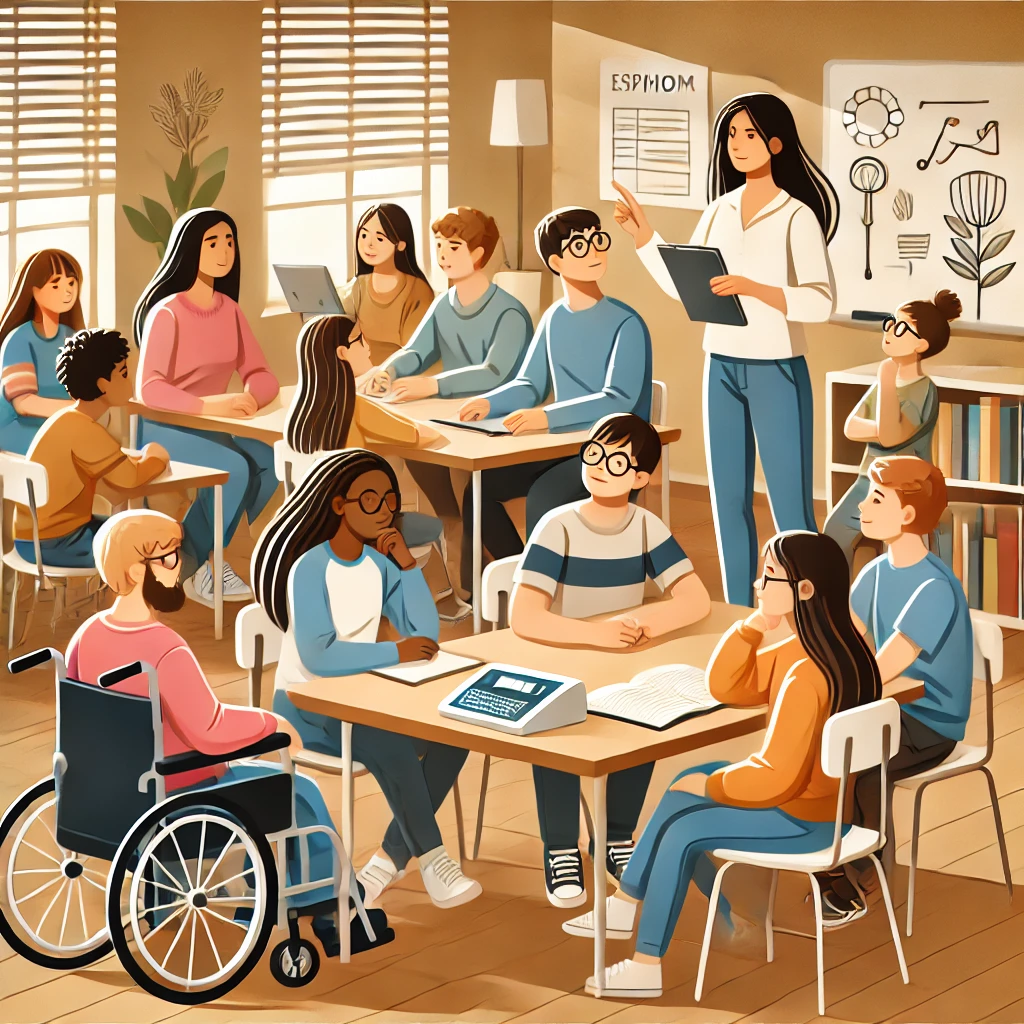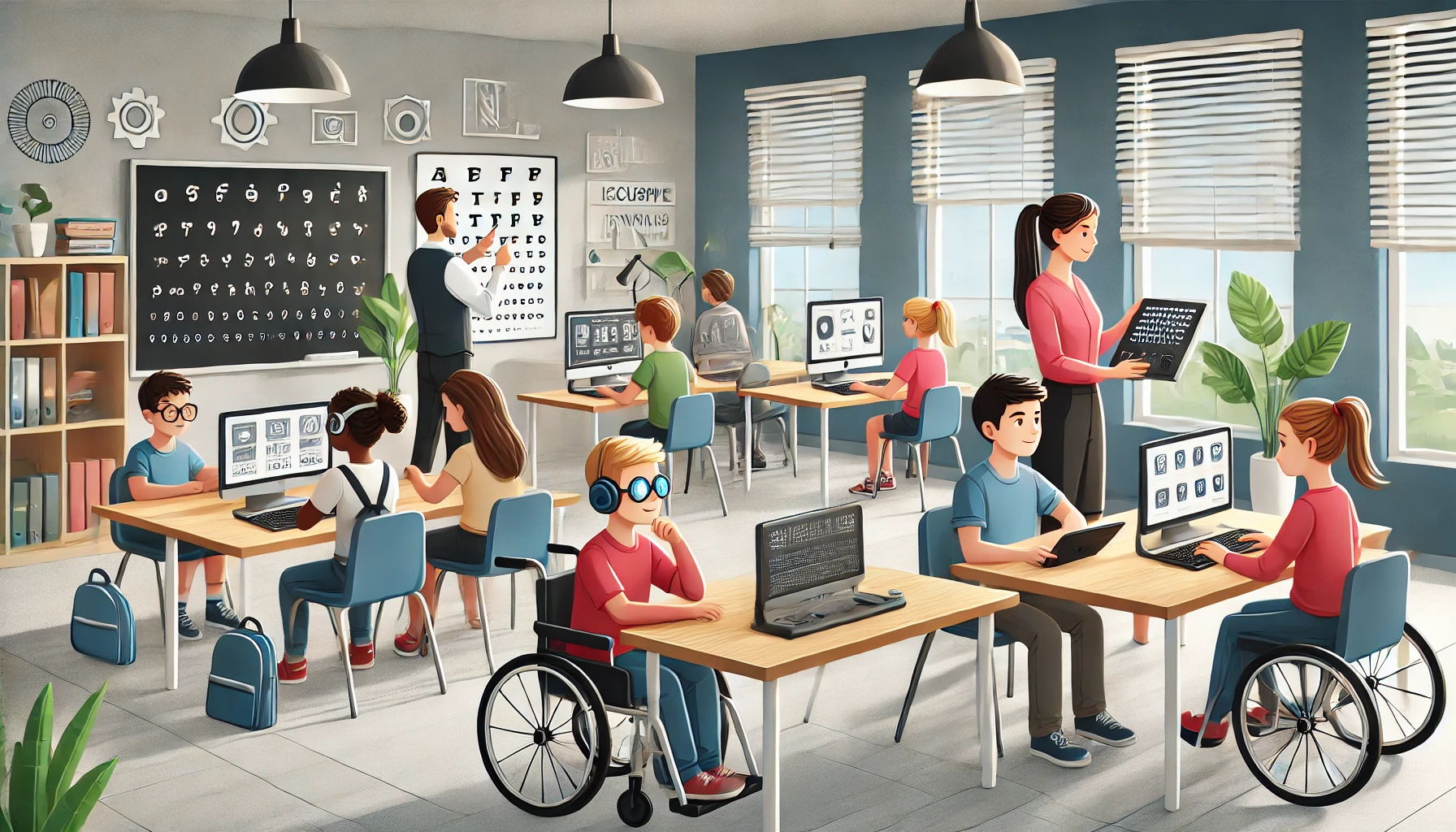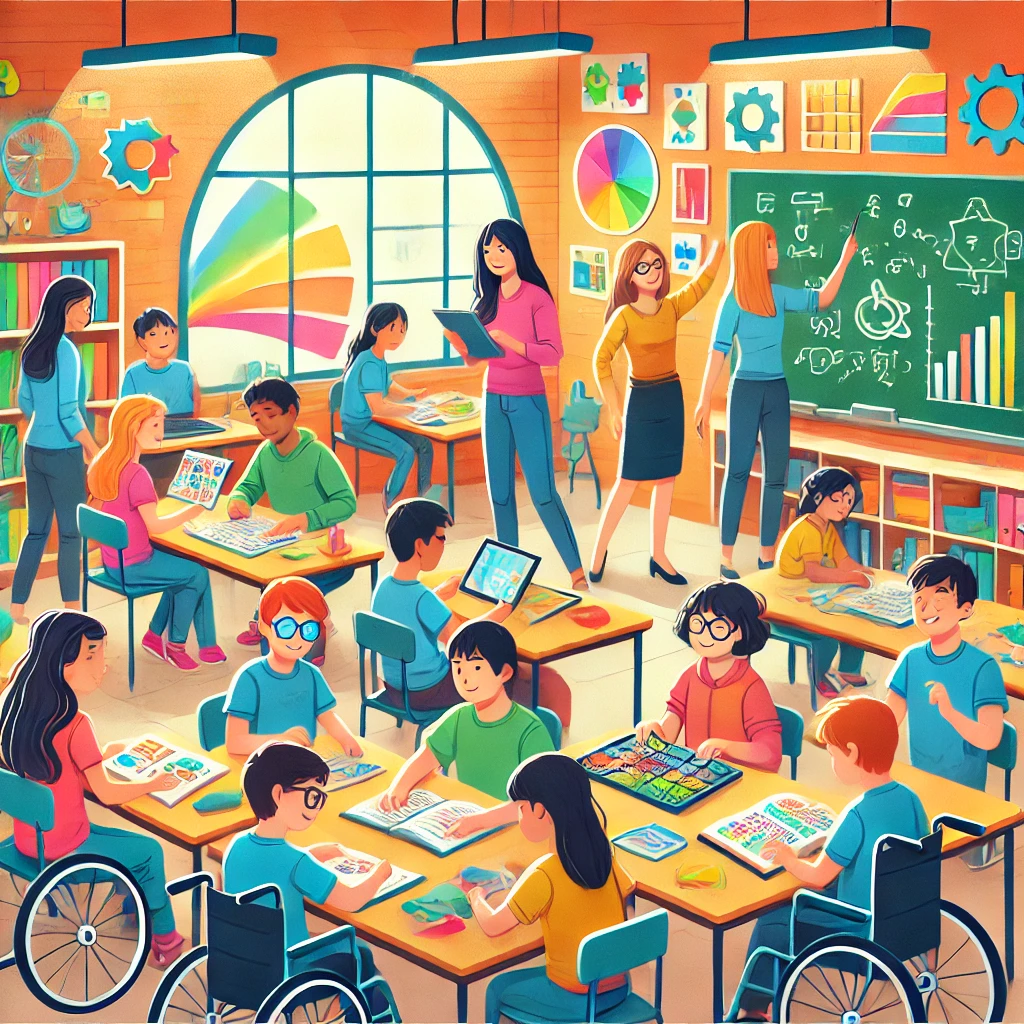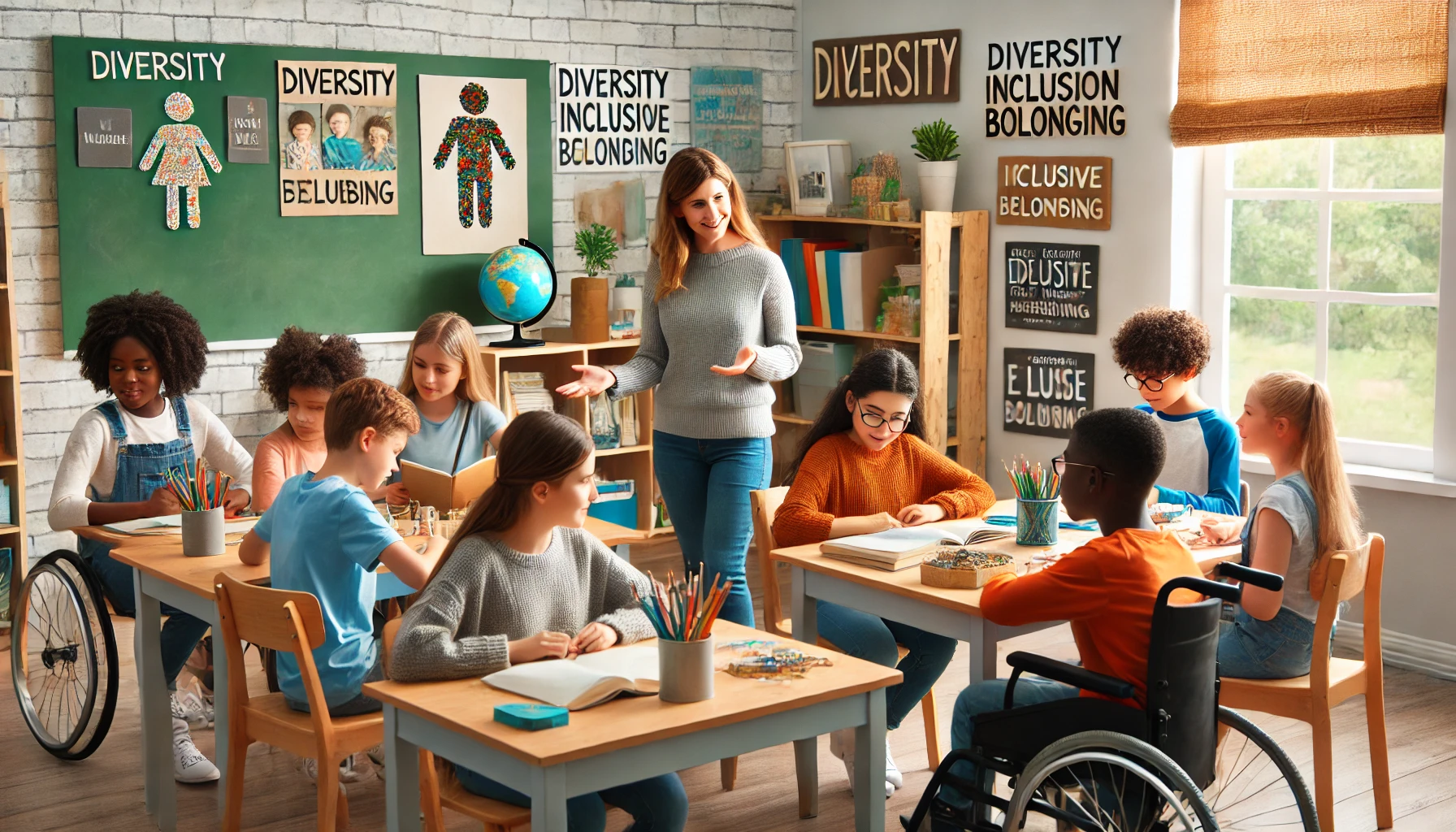Inclusive Teaching Strategies
Teaching isn’t just about a big lecture hall or a textbook. At the heart of education is the idea of inclusive teaching. Simply put, it’s about making sure every student, from all walks of life, feels like they belong and that they can succeed. These teaching methods welcome students of all stripes, focusing on what each student brings to the table and helping them overcome any roadblocks along the way. It’s about celebrating what makes each student unique and building a classroom where everyone can shine.
Definition and Importance
So what exactly is inclusive teaching? According to Brown University, it’s about making sure all students feel part of the action. This means getting everyone involved in what’s being taught, how students are graded, and the way lessons are delivered. Imagine a classroom where no one is left out because of where they come from or any challenges they might face. Now, that’s a kind of setup where everyone has a shot at success. Inclusive teaching creates a learning space that’s as fair as it is enriching, making sure the classroom is a place where equity and diversity truly thrive.
Broadening Participation Efforts
When it comes to broadening who gets involved, inclusive teaching makes room for everybody across the social spectrum, with a particular shout-out to fields like the life sciences. Turns out, a whole array of people from different backgrounds, especially those who’ve historically been kept on the sidelines, want in. We’re talking women, folks from various racial and ethnic backgrounds, people with disabilities, LGBTQ+ individuals, those first in their families to attend college, and anyone from economically challenged situations.
Educators hopping on the inclusive bandwagon need to dig deep to understand why some students aren’t participating as much. This involves taking a good look at themselves and their teaching methods. It means looking at the curriculum from every angle and making tweaks so every student feels supported and encouraged to reach their full potential. By tackling issues like how cultural norms affect student interactions and how diversity can drive engagement, teachers can create a welcoming classroom that values equal opportunities and accessibility for everyone.
Putting actions behind the words of inclusive teaching is how classrooms transform into places where every student feels a sense of belonging. By nurturing a culture filled with acceptance, educators empower their students to grow, both academically and socially, no matter their background or what challenges they face.
Creating an Inclusive Environment
Inclusive education is about making sure every student, no matter their needs or backgrounds, gets a fair shot at learning. It’s not just words on a page; it’s about action—action that tackles biases and assumptions lurking in the classroom.

Understanding Participation Imbalances
To help every student feel like part of the gang, teachers need to figure out why some kids are quieter than church mice while others never stop talking. Could it be that some of them just haven’t been given a chance to speak up, or maybe they feel invisible? The secret sauce is figuring out these dynamics and mixing up the teaching styles to fit every kid like a glove.
We’re all about keeping things balanced, as you can read about in more detail from the folks over at Yale University. They emphasize the importance of understanding how each student’s needs and contributions are unique. By creating a classroom model that appreciates and uses these differences, teachers can start building a better learning environment for everyone.
Addressing Cultural Assumptions
A classroom isn’t just four walls; it’s a melting pot of cultures, identities, and backgrounds. Sometimes teachers unknowingly bring their own cultural baggage along, which can impede learning. However, by shining a light on these biases, they can foster a more welcoming idea of education where each student’s heritage is respected and harnessed.
Getting to know the students—where they come from, what makes them tick—means making changes to how we teach so lessons resonate personally. This doesn’t just help students participate; it also ensures everyone feels like they belong.
When teachers open the door to these discussions, they’re not just shaping a class; they’re creating a home. By doing this, educators set up a community that stretches far past any syllabus or curriculum, celebrating the voices that make up the classroom tapestry.
By addressing issues of participation and cultural bias head-on, schools become places where every kid—regardless of their special needs or background—knows they are not only part of the classroom but a valued member of the learning community. When schools prioritize diversity and inclusivity, the classroom becomes a lively place where everyone shines, bolstered by a strong sense of support and opportunity to aim high.
Implementing Inclusive Teaching Practices
Making sure every student feels treasured and uplifted isn’t just a good idea—it’s a necessity. Let’s dive into two main gears of this machine: mixing up teaching styles for better awareness and getting everyone to chime in.

Pedagogy Blend and Awareness
Imagine teaching as a wild mix of recognizing what’s going on inside and between people—kind of like a stew, where every ingredient counts. It’s about questioning why some students seem to chat more in class. Instructors need to ponder on how expectations tied to culture shape interactions, and how giving a good shake-up to both course content and teaching style can boost everyone’s involvement.
Switching up the teaching game keeps things spicy and ensures everyone’s taste buds are tickled just right. Using methods like Universal Design for Learning (UDL) helps sculpt goals and assessment methods that fit everyone like a snug hat.
It’s about checking in with students, soaking in their different backgrounds, and tweaking teaching tools to better fit the crowd’s needs. By valuing what students bring to the table and nurturing a vibe of mutual respect, teachers can create a warm, welcoming space for every learner.
Promoting Full Participation
Getting students off the sidelines and into the action is the heartbeat of inclusive teaching. Teachers should dig deep to figure out what’s causing uneven participation and try to dial up a classroom vibe that gives space to every voice, including understanding cultural bearings and personal student stories.
Rallying everyone to jump in on discussions, group events, and team tasks can really open up a stage for diverse views. Celebrating the value of student input, no matter where they come from or what hurdles they face, builds a cozy community spirit within the four walls of the classroom.
Offering different ways for kids to show what they’ve learned and take part in class activities opens the door for all styles and abilities. Teachers ignite a spark when they provide choices, empowering students to really shine and actively contribute to the class dynamics.
By blending a thoughtful teaching stew with efforts to rev up involvement, teachers can whip up a lively learning space that celebrates every student’s unique chops, promotes a sense of belonging, and gives fair shots to everyone pursuing those learning moments.
Categories of Inclusive Strategies
Inclusive education isn’t a one-size-fits-all kinda deal. It involves various strategies that teachers need to wrap their heads around to get really good at creating a classroom where every kid feels like they can learn. The key is to mix it up with different approaches, so no student feels left out, especially those with special needs.

Examples and Methods
For a classroom that’s truly inclusive, teachers should test out different tricks and tips aimed at making the class more fun and engaging for everyone. This includes making sure the classroom is accessible, so every student, regardless of their abilities or background, can join in on the fun (Yale Poorvu Center for Teaching and Learning).
It’s all about understanding why some kids speak up more than others, how cultural stereotypes might affect classroom chatter, and how students’ backgrounds can change how much they get involved. Thinking carefully about how the course is set up and taught can really help make sure every student’s invited to the party (Yale Poorvu Center).
By exploring and putting different ideas to the test, teachers can start to even out who gets to talk in class so every kid feels like they’re being heard and appreciated. This way, no matter what each student’s situation is, everyone can dive into learning, creating a welcoming and inclusive vibe in school (Yale Poorvu Center).
Mastery of Pedagogy
To get really good at this inclusive teaching thing, teachers need to understand why some kids don’t participate and what can be done about it. They should know how to make sure that every student gets the chance to really get involved.
Teachers are encouraged to always improve their teaching game by trying out new teaching methods and being ready to change things up to fit their students’ unique needs. By mastering these skills, educators can create a classroom that’s more welcoming, fun, and effective for all the kids, especially those who need a little extra support.
For more tips on how to ace inclusive teaching, teachers can check out resources like “Creating Inclusive College Classrooms” from the UMichigan Center for Research on Learning and Teaching, “Inclusive Teaching Strategies” from the Cornell Center for Teaching Innovation, and “Teaching a Diverse Student Body: Practical Strategies for Enhancing our Students’ Learning” from the UVA Center for Teaching Excellence, to name just a few (Yale Poorvu Center).
Resources for Inclusive Education
When it comes to making classrooms open and welcoming for all kids, the right resources make a huge difference. Whether you’re a teacher, a parent, or a caregiver, having the right tools can help you create a support system for students with special needs. This means having everything from thought-provoking articles and books to action-focused strategies that you can use right there in the classroom.

Articles and Books
If you’re looking for some good reads about making education more inclusive, there are some resources you must check out. These gems offer rich insights and solid research to help create a more welcoming learning atmosphere:
- “Creating Inclusive College Classrooms” from the UMichigan Center for Research on Learning and Teaching
- “Inclusive Teaching Strategies” from the Cornell Center for Teaching Innovation
- “Teaching a Diverse Student Body: Practical Strategies for Enhancing our Students’ Learning” from the UVA Center for Teaching Excellence
These pieces aren’t just academic fluff—they’re packed with smart tips and stories from real teachers, helping others understand that it’s possible to teach in a way that respects and celebrates everyone’s differences.
Practical Strategies
Now, knowing stuff is good, but putting it into practice? That’s where the magic happens. These practical approaches are all about bringing those inclusive ideas to life. Here’s what can help make an inclusive classroom shine:
- Think of regularly checking that the curriculum lines up with the inclusive goals
- Make sure students get involved with fun and engaging activities
- Build a classroom vibe that’s all about respect and appreciating differences
- Adjust your teaching styles so everybody’s needs are met
Integrating such tactics doesn’t just talk about inclusivity; it shows and lives it, letting each student know they’re valued. If you’re craving more tips and tricks, look no further than the Yale Poorvu Center for Teaching and Learning. It’s loaded with useful insights and advice for mastering this incredible teaching art.
With a blend of knowledge and hands-on strategies, teachers can step up their game in inclusive education, ensuring schools are a place where every student gets the chance to grow and achieve.
Benefits of Inclusive Education
Inclusive education ain’t just about teaching kids with disabilities alongside their classmates without filling the gaps, it’s about stirring a sense of unity and setting everyone up for a richer learning journey. Let’s peek into how it impacts academics and the social world for the folks involved.
Academic Gains
When it comes to hitting those academic goals, inclusive education is like having an all-star team of special education and general teachers on your side. Working together in the same classroom means creating a hub of resources and support that lifts everyone. According to the University of San Diego, students with disabilities fare better academically when everybody learns together.
A study from Think Inclusive showed that, over two years, 47.1% of students with disabilities in general classrooms improved in math, while only 34% did so in self-contained ones. This means everyone’s winning when learning is shared—more brains picking up math smarts is one heck of a community benefit.
Inclusive settings boost everyone’s learning power, mixing expert advice and specialized tricks to help all students soar high in their studies.
Social and Behavior Improvements
It’s not all about hitting the books. Inclusive education molds social skills and behavior too. Kids in these classrooms learn to get along with everyone, thanks to an environment that welcomes diversity and encourages some heartfelt bonding, says the University of San Diego.
Research has found that students from inclusive settings show more polished social skills, less acting out, and — get this — they skip school less. When kids work and play with a mix of friends, they learn to cherish differences, feel what others feel, and build friendships that might just last a lifetime.
Plus, soaking in a range of cultural backgrounds arms students with empathy and openness. By immersing themselves in diverse surroundings, they become more accepting of varied ways of life, ready for whatever the future holds.
In a nutshell, inclusive education is about way more than pencils and paper; it’s about weaving a fabric of kindness, respect, and opportunity for all. Teachers and caregivers who embrace inclusiveness are forging an educational haven where every kid is valued and empowered to shine.






